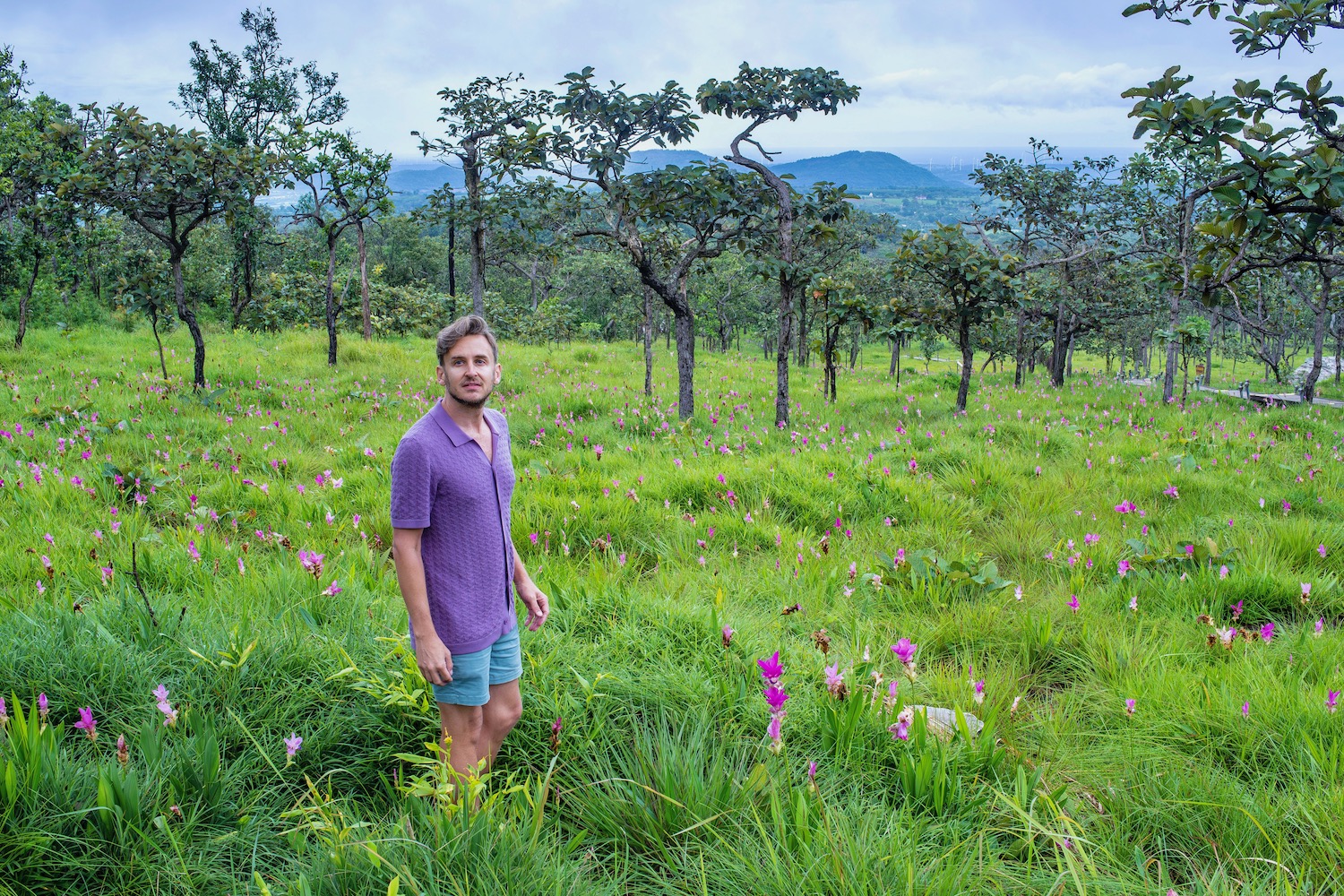If you read my Japan website, then you know I love a good opportunity for flower viewing. Sakura are the most obvious option in Japan, but there are many others.
In Thailand, the situation is strangely more complicated. On one hand, flowers bloom constantly here, on account of the year-round warmth. On the other hand, there are very few flowers with as much cultural importance as Japan’s cherry blossoms.
To put a finer point on it, I don’t necessarily put the Chaiyaphum Siam tulips (which are actually a species of ginger—more on that in a second) on the same level as Japan’s sakura. But they’re worth seeing, regardless.
When Do Siam Tulips Bloom?
If you visit the Siam tulip fields during most of the year, you will be very puzzled—there will be no flowers at all! This includes much of the dry season, i.e. the peak period for travel in Thailand. In order to see the pink-purple flowers (which, once again, are not actually tulips; again, I’ll have more to say about that soon), you will need to visit between about the end of June and the end of August, with July being the month of peak bloom.
Note that it may be possible to see dok krachiao (as these flowers are known in Thai) slightly outside of these times. I’m talking, of course, about potted versions of the plant, which are especially ubiquitous throughout north-central and northeastern Thailand, but can actually be found throughout Thailand. Still, it is most common even for these plants to bloom no earlier than May and no later than September.
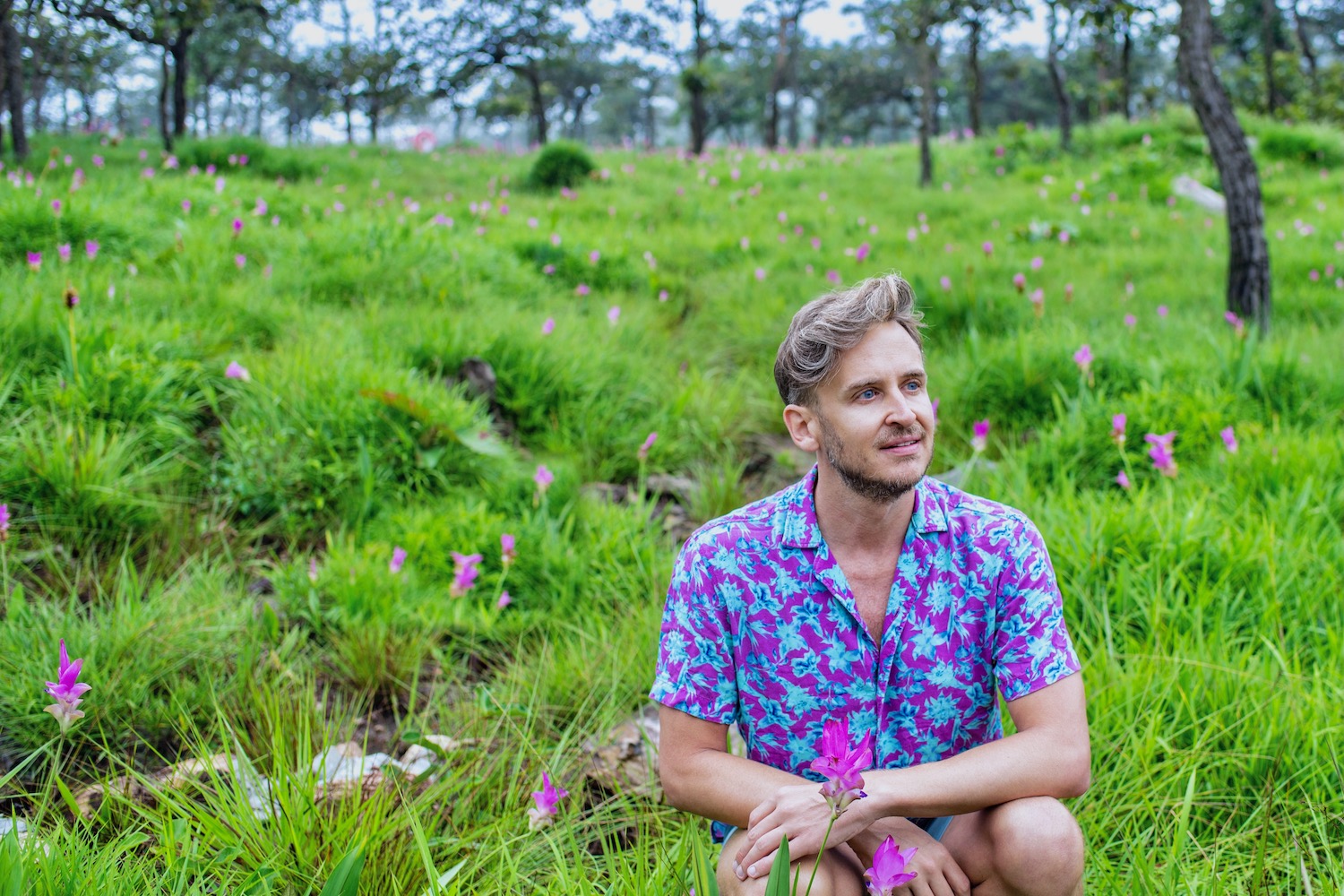
How to Approach a Siam Tulip Trip
Decide where to start
For most Thais, Chaiyaphum is a day (or, in rarer cases, weekend) trip from Bangkok, where they or their travel companions own a car. While you can of course rent a car (or hike a taxi from the capital), starting closer to the action (i.e. in Loei or Khon Kaen) might make more sense.
And how to get around
As I implied in the last section, having your own set of wheels will make it much easier to access the Chaiyaphum flower fields. There are buses you can take here (usually in combination with some kind of private transport, like a taxi, songthaew or Grab car), but this is a very cumbersome way to travel through rural Thailand.
One national park or two?
Dok krachiao are found in two national parks in Chaiyaphum: Sai Thong National Park and Pa Hin Ngam National Park. These parks are close enough to one another that many travelers visit both, though that’s obviously a taller order if you aren’t self driving. They have a completely different ambiance from one another, too.
Stay overnight–or don’t
Apart from the time of year when Chaiyaphum tulips are blooming, Jangwat Chaiyaphum isn’t a very popular tourist destination. As a result, it makes sense that there aren’t many hotels here. If you do stay overnight here, I’d recommend setting pretty low expectations and limiting your time in your room.
Pick an onward adventure
As I’ll explain in more detail in the next section, Chaiyaphum makes for an amazing first stop en route to other adventures in north-central and northeastern Thailand. In fact, unless you are literally coming up for the day from Bangkok, I’d say that this is necessary in order to make your trip worthwhile.
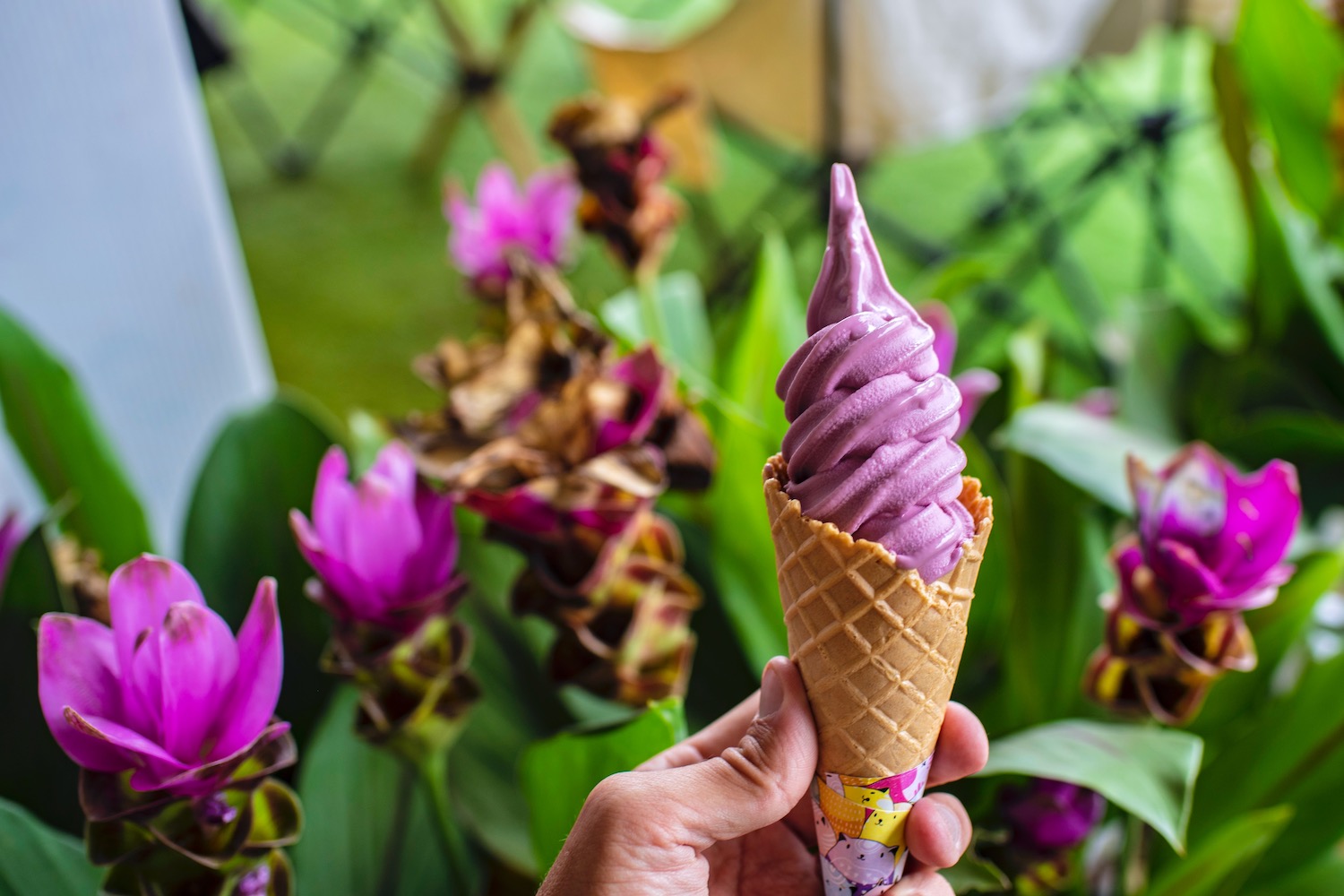
Other Things to Do in and Around Chaiyaphum
Chaiyaphum itself is not the most exciting place in Thailand, if I can be perfectly honest. Still, it can be a gateway to other more interesting provinces:
- Loei is about 3-4 hours north of Chaiyaphum, but is worth the drive, especially if you can spend at least a couple of days here. I especially love relaxing in riverside Chiang Khan!
- En route to Loei, you can stop in rural Phetchabun, which is home to one of Thailand’s largest Buddha statues.
- Other nearby provinces that may be worth visiting include Khon Kaen and Nakhon Ratchasima, a.k.a. Korat.
In other words, seeing the Thailand pink tulips (even though they aren’t really tulips) can be the beginning of your adventure, rather than the entirety of it.
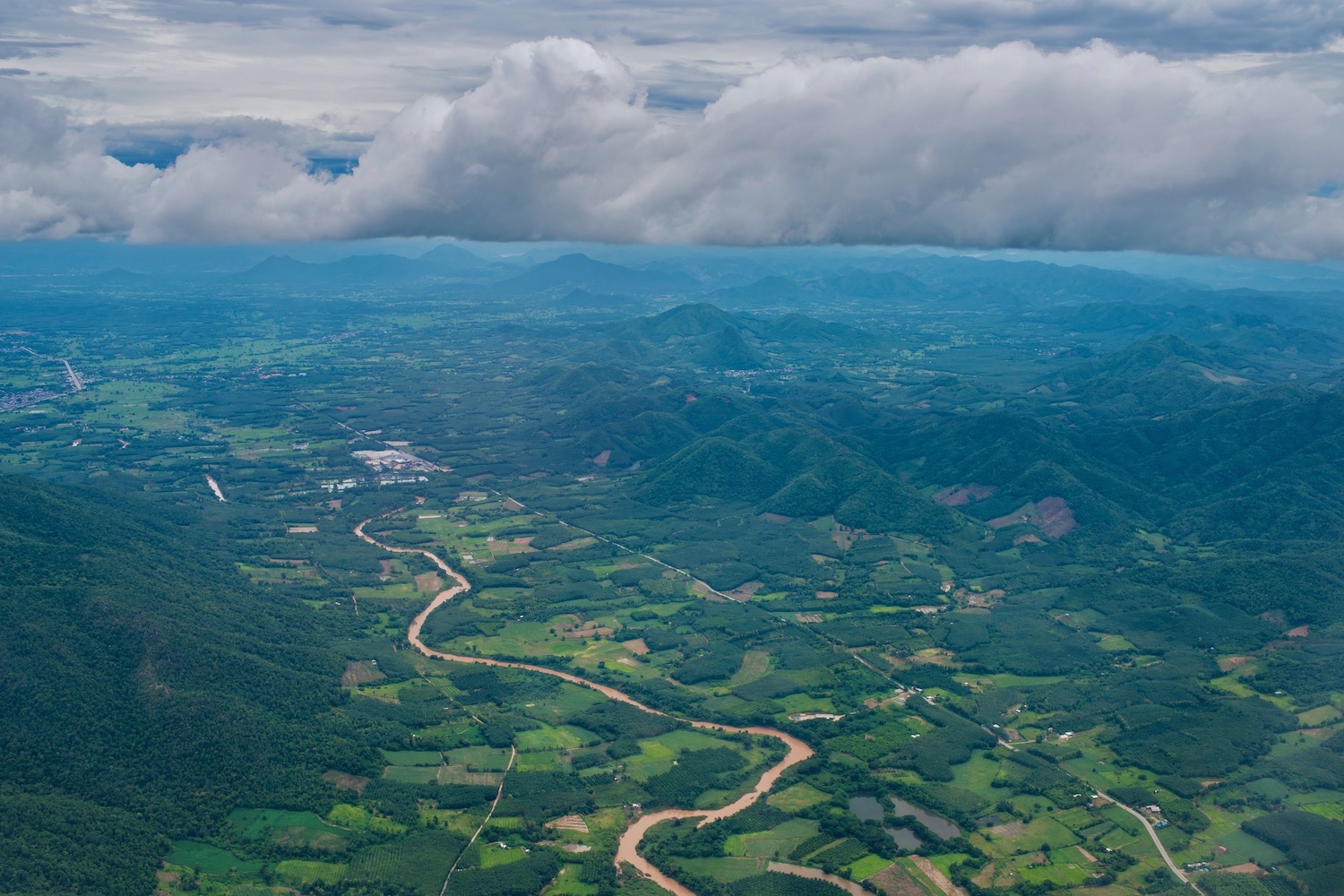
Other FAQ About Seeing the Siam Tulips
Are Siam tulips actually tulips?
Siam Tulips, which are officially known as dok krachiao in Thai, are not actually tulips. Although they appear from far away to have a similar shape to tulips, they are a member of the ginger family, in simple biological terms. This becomes clear when you see them up-close.
Can a Siam tulip be planted outdoors?
Siam tulips can be planted outdoors in certain hot, humid climates. These include most of Southeast Asia, as well as places like Taiwan, Florida, Central America and the Caribbean. If you’re uncertain as to whether you can grow Siam tulips in your area, consider contacting a local florist or arborist.
When is the Siam Tulip festival?
The Siam Tulip Festival (as it’s unofficially known) takes place in Thailand Chaiyaphum province every year between the end of June and the end of August. The flowers always bloom during the month of July, so this is always a safe bet in terms of when to see them.
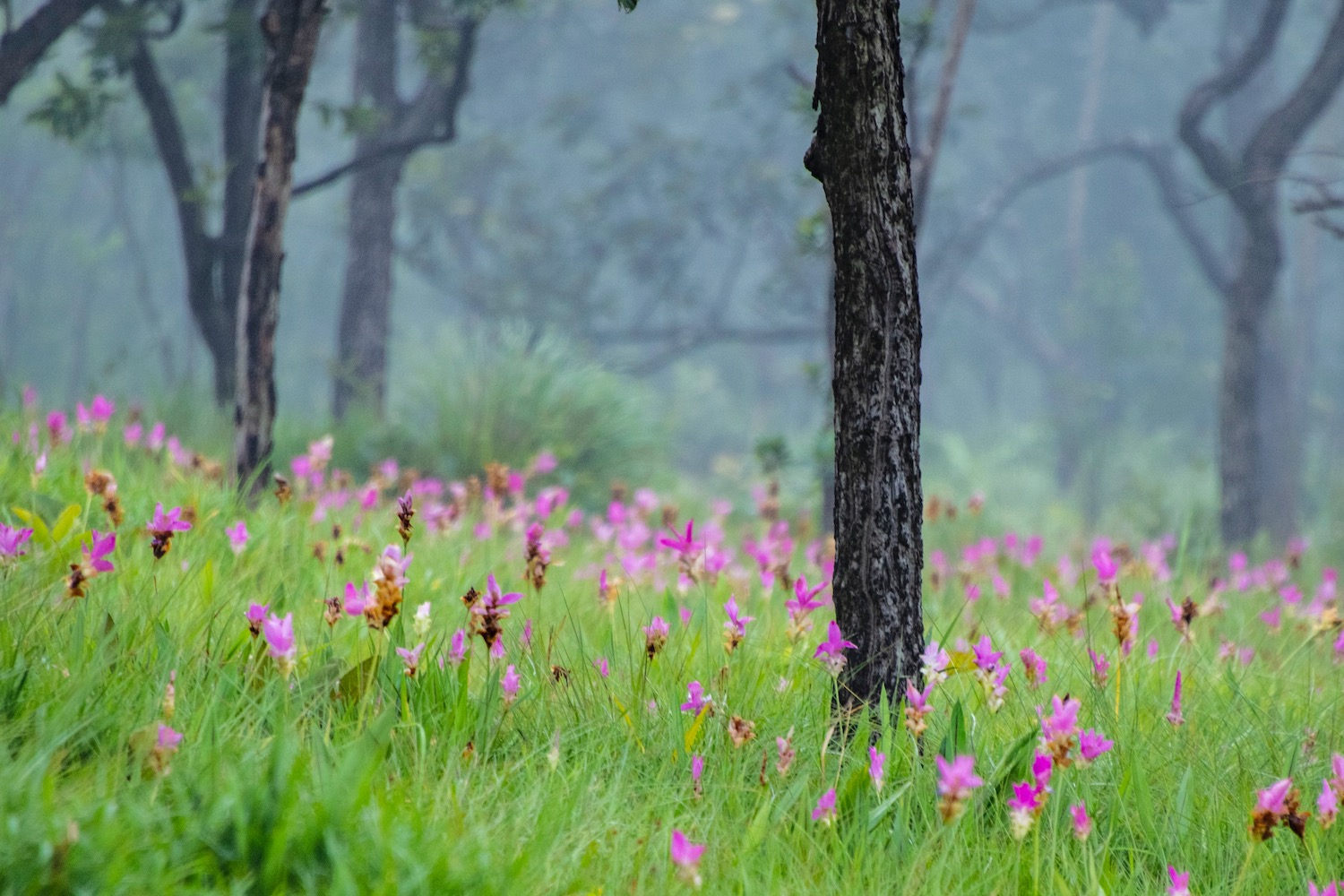
The Bottom Line
It’s not accurate to say that the Chaiyaphum Siam tulips are Thailand’s sakura, but they’re still pretty awesome. They’re especially nice to enjoy within the context of a road trip around Isaan (even if Chaiyaphum, technically speaking, is not part of that region). Before you visit, keep in mind that many photos of dok krachiao fields are manipulated—the blooms probably won’t be as dense as they appear in pictures on social media. Still, the cool weather and lack of tourists makes the experience extremely enjoyable, particularly if you enjoy it in the context of hiring me to plan your Thailand trip.



